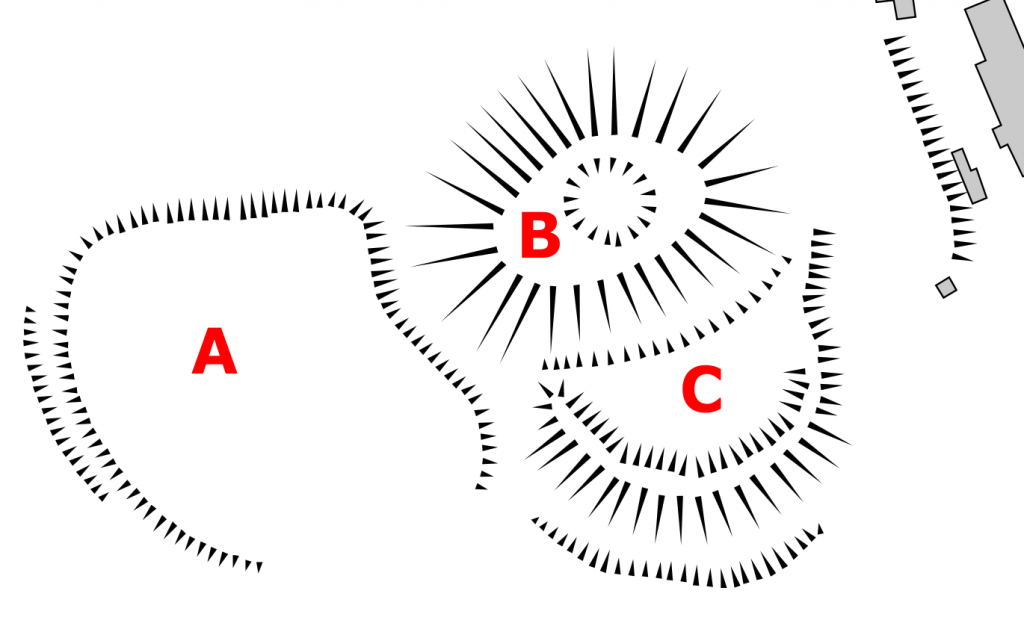Ringwork castles were built during the 11th and early 12th centuries by the Normans following their invasion in 1066, typically as an alternative to the more common motte-and-bailey design. A ringwork castle typically had a palisade built on top of a raised earth rampart, protected by a ditch, possibly supported by additional towers. The fortifications were relatively easy to build with unskilled, often forced, labour, but still militarily formidable. By the late-12th century, the design was largely superseded by alternative forms of fortification.
Design


Ringwork castles had a relatively simple design: a roughly circular earthwork bank would be built up, surrounded by a protective ditch. A timber rampart topped off the bank. The castle could be up to 50 metres (160 ft) in diameter. Some ringworks had wooden towers and gateways built into the ramparts.
Ringworks were typically circular, but in some cases only a partial bank would be created, with the remainder of the circuit protected by natural features, such as a promontory, as at Lydford in Devon. About 30 percent of ringwork castles protected the main ringwork with defensive baileys – the ringwork at Burton in Lonsdale in North Yorkshire, for example, had two baileys, protecting its more vulnerable sides.
The interior of a ringwork could contain a range of buildings, from living quarters to storage facilities.
History
As the Normans occupied England and southern Wales in the 11th and early 12th centuries, they constructed hundreds of castles. The majority of these were motte-and-bailey designs, but some were ringworks. Today, there are only 200 examples of these left in England.
It is unclear why some builders constructed motte-and-bailey castles, and others ringworks – we typically have no written records. The choice may have been partially driven by terrain, as mottes are typically found on low ground and on deeper clay and alluvial soils – ringworks often on higher ground and on lighter soils. Another factor may have been the necessity speed, as ringworks would have been faster to build than mottes.
Some ringwork castles were later converted into motte-and-bailey designs, by filling in the centre of the ringwork to produce a flat-topped motte. The reasons for why this decision was taken are unclear; motte-and-bailey castles may have been felt to be more prestigious, or easier to defend; another theory is that raising the height of the castle was undertaken to create a drier site.
Bibliography
Attribution
The text of this page is licensed under under CC BY-NC 2.0.
